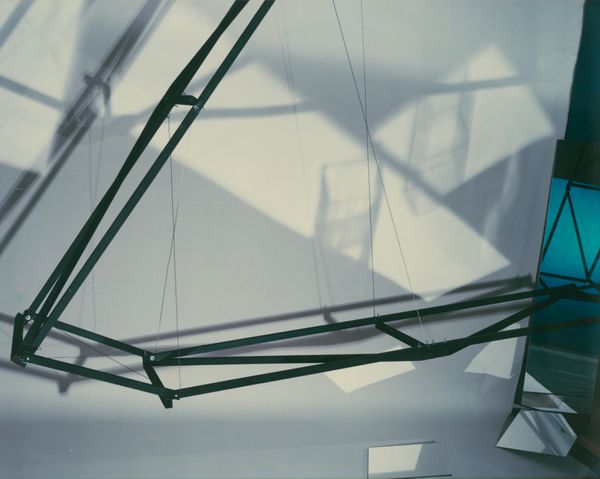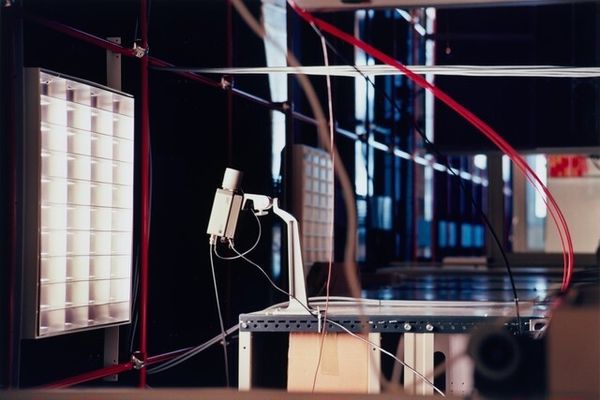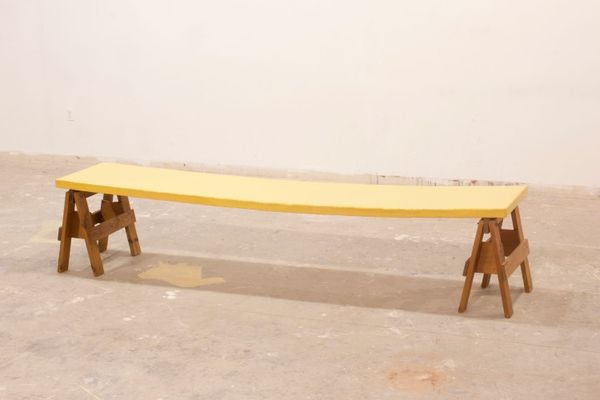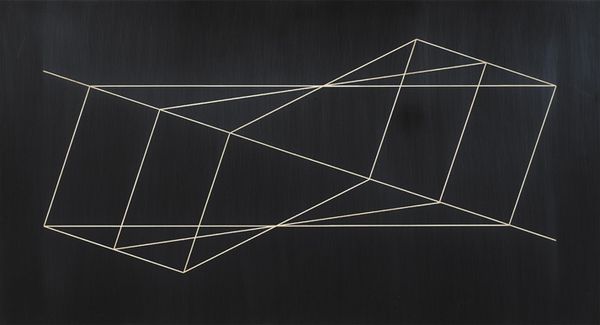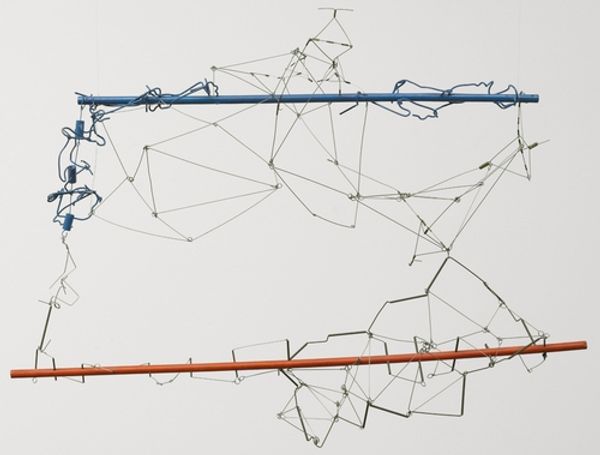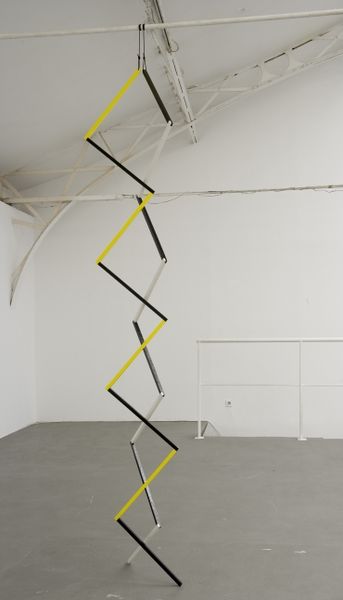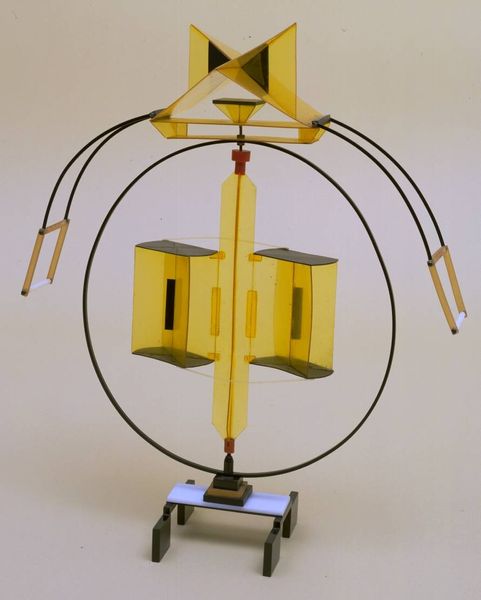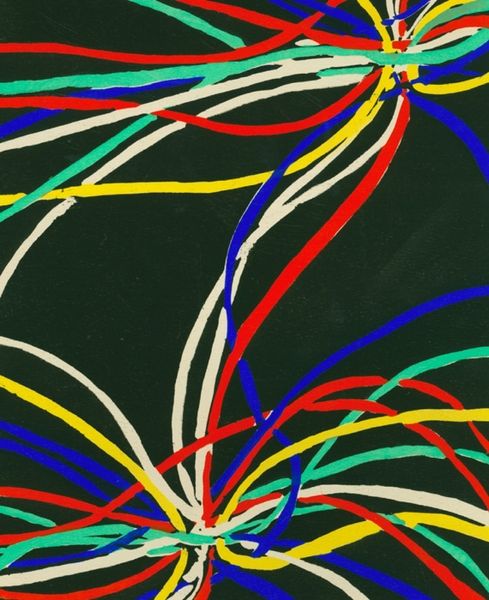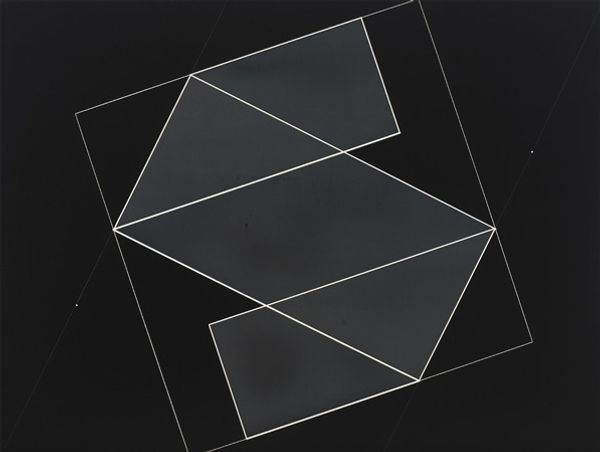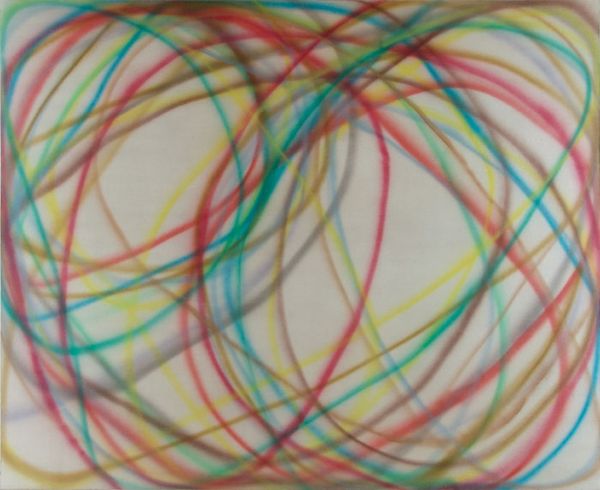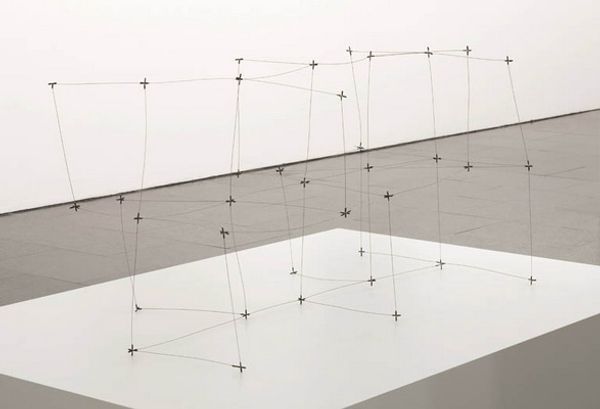
mixed-media, sculpture
mixed-media
constructivism
form
geometric
sculpture
abstraction
line
mixed media
Curator: At first glance, this sculpture titled "Assembly (Triangulary Bars I)" dating from 1972, strikes me as quite playful. It is mixed media on, presumably, a wood support and immediately evokes a sense of lightness through its colors and geometric patterns. Editor: I see the “playful”, yet in 1972 Romania, such displays of seemingly harmless geometric structures held profound socio-political implications. Let's delve into Constantin Flondor's practice amidst a dictatorial regime. Flondor was a key member of Group 111. They used art as an experiment. The work wasn't so innocent in those days, more an avant-garde exercise under a watchful eye, you know? Curator: Indeed. The use of color here--primary colors no less--combined with simple forms could be seen as a way to challenge or even subvert, the artistic and social conventions enforced by the totalitarian government at the time, right? This "constructivism" approach could offer some type of subtly veiled resistance through its non-figurative style, providing a space for expression and thought. Editor: Precisely. Even its abstraction becomes a potent form of resistance. In a landscape saturated with socialist realism—state-sanctioned, heroic depictions of labor and idealized visions—Flondor’s "Assembly," with its geometric abstraction, proposes an alternative vision of order, of building something different within that context. What's remarkable is its potential as an experiment for imagining different worlds through abstract form. The triangle form itself appears as a potential agent. Curator: Looking more closely at the assemblage itself, the intersections and overlapping planes create tension but the different colors also give some kind of vibrancy. Editor: An uncanny but needed vibration back in the day...an assertion of individual creativity amid ideological uniformity. What the formal and the historical reveal jointly makes the work potent, both then and today. Curator: Well said, and food for thought to any one of our listeners that comes across this fascinating work. Editor: Yes, it makes us reflect on how spaces were imagined and how this historical object resonates with a critical and aesthetic dimension.
Comments
No comments
Be the first to comment and join the conversation on the ultimate creative platform.
